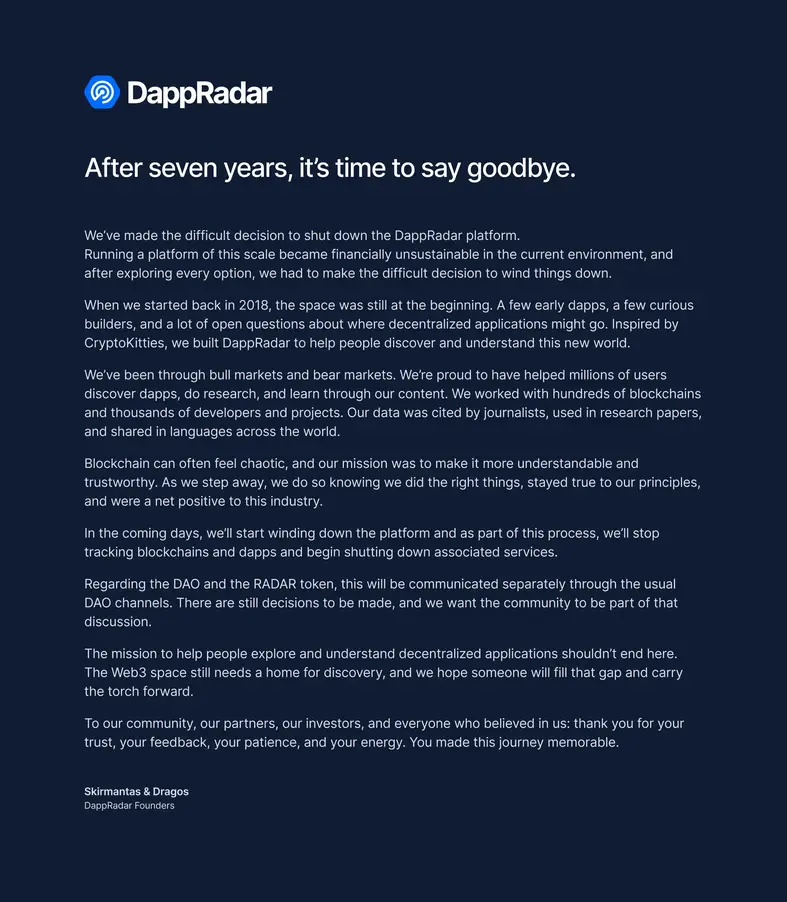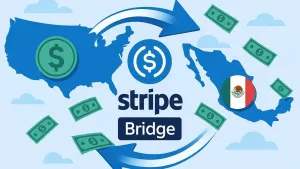DappRadar announced it will shut down operations, saying the platform can no longer sustain the financial demands of tracking decentralized applications at global scale.
The team described rising infrastructure costs and reduced analytics revenue as key drivers behind the decision. The company said it will release separate updates covering its RADAR token and the future of the DAO that supported community initiatives.
Following the announcement the RADAR token dropped sharply, losing about 30 percent in early trading.

Seven Years Of Web3 Tracking
Launched in 2018, DappRadar became a widely used hub for decentralized application data, offering insights into user activity, transaction volume and protocol growth across various blockchains.
Its dashboards were frequently referenced by industry researchers, developers and investors who relied on them for comparative snapshots of network performance.
Over time, however, the economics of running continuous real-time tracking across multiple networks placed growing strain on smaller analytics providers.
Reports show that engagement across several Web3 categories contracted during prolonged periods of lower market activity, which further reduced revenue for analytics firms.
Weak Conditions For Web3 Data Firms
The closure highlights a broader challenge in crypto analytics: many platforms emerged during high-growth cycles when speculative activity supported robust traffic and business development.
As market participation cooled, free and low-cost analytics portals struggled to convert attention into reliable revenue.
Maintaining real-time infrastructure, indexing new chains and serving dashboards for thousands of applications requires costly engineering and compute resources. For many firms, including DappRadar, monetisation models did not keep pace with rising operational demands.
Industry analysts note that enterprise-grade analytics providers have fared better because they serve institutions directly, while community-facing dashboards often rely on advertising or token-linked models that fluctuate with market cycles.
Token And DAO Questions Ahead
The fate of the RADAR token and its associated DAO now sits at the centre of community discussions. DappRadar said it will address governance, token utility and possible migration paths in separate communications.
Token holders and DAO participants are awaiting clarity on whether any elements of the ecosystem will transition to new stewardship or wind down entirely.
Next Steps For Users And Data Access
One key unanswered question is how historical datasets will be handled. Users want to know whether public dashboards will remain archived or if datasets will be transferred, open-sourced or integrated into another analytics service.
Remaining competitors may attempt to onboard displaced users, but sustaining large-scale cross-chain tracking remains a challenge across the sector.
Developers and investors who relied on DappRadar may need to diversify their data sources, turning to a mix of chain-native explorers, paid analytics platforms and community-driven dashboards.
The shutdown marks a notable transition in the Web3 analytics landscape. As the sector matures, sustainability and regulatory readiness appear increasingly central to survival, especially for platforms that support high-frequency, multi-chain tracking.






